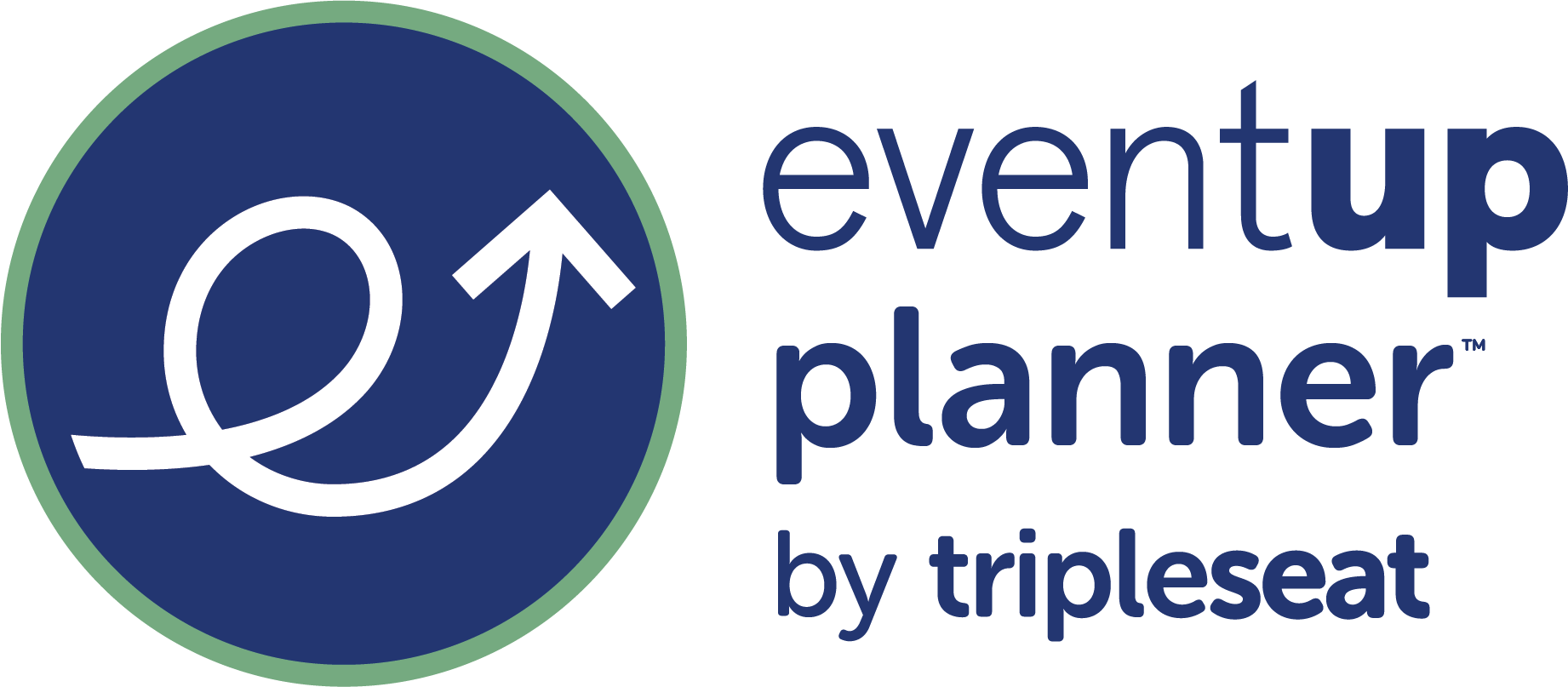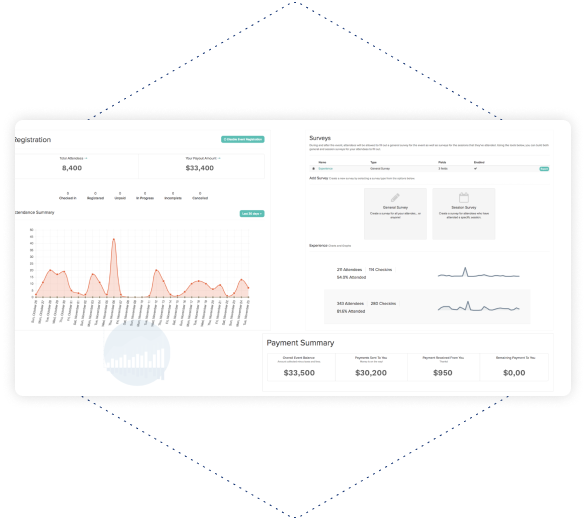Higher education events and classes come in all shapes and sizes. From public to private, virtual to in-person or hybrid, large or small… university events run the gamut. And while the process to plan an event or a class may be similar, the needs of each greatly differ. This makes a flexible event management software for universities and other higher education organizations a must for those with a large portfolio of events and classes.
While generic event management platforms have worked for higher ed organizations for years, they don’t always work to manage class registrations and payments. And departments are siloed, relying on multiple tools to manage a complex portfolio of classes and events.
A good event management software for universities allows event planners and admins to streamline the planning process. It also helps to simplify the day-to-day of busy organizers. Event management platforms like EventUp Planner, can support higher ed institutions through the entire event lifecycle. From event/class promotion, to registration, to during and after the event (we’ll refer to classes as “events” for simplicity sake in the rest of this blog), EventUp Planner is there to truly support you.
Higher Education Event Types
By hosting a range of events, colleges and universities can create a vibrant and engaging campus community that supports their mission and goals. If you’re like most higher education institutions, you probably host a wide range of events. You’re likely:
- Engaging with alumni and the local community
- Enhancing the student experience
- Promoting research and scholarships
- Registering students for classes and receiving payments
- Generating financial support from donors
Here are some common types of higher education events that an event management software for universities and colleges can support:
- Recruitment & Campus Visits
- Alumni Engagement & Reunions
- Fundraising & Galas
- Continuing Education Classes
- Accreditation Courses
- Conferences & Symposiums
- Research Events
- Concerts & Sporting Events
- Student Life Events
Benefits of Using an Event Management Software for Universities & Colleges
Streamline Event Planning
With the right higher education event management software, you can create an event or class landing page, send invites, track RSVPs, manage attendee/student lists, take secure payments and communicate with attendees, all from one place. This can save organizers a significant amount of time and aggravation trying to manage everything from multiple places, allowing you to focus on other aspects of your event. You really can consolidate all of your Excel spreadsheets, Word docs, written lists, and multiple apps and softwares into one central source of truth with an event management tool like EventUp Planner.
Improved Attendee Experience
By providing attendees with easy access to event information on a customized event landing page, plus a user-friendly registration process, organizers can ensure that attendees are well-informed and have a positive first impression of their events. First impressions are lasting! In addition, event management software for universities can help organizers collect feedback from attendees after the event or class. This allows you to identify areas for improvement and make changes for future events.
Increased Event Attendance
You can send automated invite emails out with event details and registration links to targeted groups from your existing database. Plus, higher ed event management software can help organizers promote events through social media and other channels. This helps you reach a wider audience and increases the likelihood of attendance. Attendees are more likely to register for and attend events with easy-to-follow event landing pages, a simple registration process, and email follow-ups with clear and timely event info. Those reminders will get them prepared and to your event on time.
Cost Savings
By automating many aspects of the event planning process, organizers can save time and reduce the cost of involving multiple people and tools to stay on top of your event. In addition, event management softwares like EventUp Planner can help organizers better manage event logistics. This helps reduce the likelihood of costly mistakes that happen when event info and lists are scattered across multiple people’s computers and to do lists.
Better Data Management
You can collect and store data in a centralized location that you can assign different levels of access to. Plus, organizers can easily track event metrics and use that data to inform future event planning. In addition, event management platforms can help organizers identify trends and patterns in event attendance and attendee feedback. This allows you to make even more data-driven decisions for future events.
Features to look for when vetting event management software for universities or colleges
We have shared in the past some tips to help event organizers to vet event management solutions. Some of these features are:
- The ability to create a custom website and registration pages that meet your needs and aren’t confusing to your customers
- Flexible registration forms
- Advanced ticketing capabilities
In addition to these must-have functionalities, there are some areas that are going to be especially important to higher ed institutions. Be sure to ask any software company you’re looking at if they have and and all of the following:
Event Website Accessibility
Accessibility features ensure equal access and opportunity for all individuals. They also create a more inclusive environment, provide a better user experience, enhance your brand reputation, and future-proof your website. By prioritizing accessibility, educational institutions can demonstrate their commitment to diversity and inclusivity. This also helps ensure that all individuals can participate in, and benefit from, your events. Be sure to ask if the software company supports the ADA through WCAG 2.1 AA compliance.
Data Security & Compliance
In today’s digital world, data privacy is an increasing concern for event attendees. From GDPR compliance, to data encryption, two-factor authentication (2FA), and more, the event registration software you choose should be able to meet and exceed all key security requirements to keep your attendees’ personal information safe and secure.
Secure Payment Gateway
Secure payments—including contactless providers like Stripe, Microsoft, Apple, and Google Pay—allow for your attendees to pay for your event directly without concern. If attendees can no longer attend your event, the ability to manage refunds securely and efficiently helps build loyalty for future events.
Some education institutions utilize unified payment processing vendors, which may limit their ability to work with event technology providers. In this case, EventUp Planner allows customers to use our own Stripe account, solving this challenge for many organizations.
Ask what options the software company has that will meet the sometimes complicated requirements of higher education.
Ease of Use
A lot of colleges and universities put on the same events each week, month and/or year. And many use event management software to manage class registrations. These events/clsses tend to be VERY similar to each other in terms of setup. So be sure you find a platform that makes it easy to duplicate events and edit details so you don’t have to start from scratch with each class or event you want to create and manage. It sounds like a no-brainer, but many platforms don’t make this easy.
Conclusion
In conclusion, event management software for universities and colleges can be a valuable tool for higher education organizations. By streamlining the event planning process, improving the attendee experience, increasing event attendance, saving costs, improving data management, and making it easy to replicate what you’ve done for future events, event management software can help higher education organizations plan and execute successful events with ease.
Want to learn how EventUp Planner can support your portfolio of events? Contact our team to find out and see if EventUp Planner is the right platform for you!
Let's Talk!
Let’s explore how the EventUp Planner platform can help you put on the best possible training and education events.














